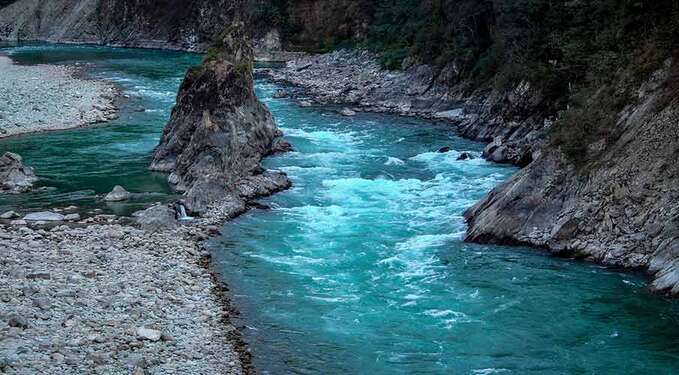It is a land of contrasts where the breath-taking beauty of snow-capped mountains, forested hillsides and picturesque valleys also have their darker sides - steep cliffs, treacherous paths and potentially dangerous wildlife. The State has significant strategic importance for India, hence its sensitive location bordering China. Only recently it has been opened up for tourism.
Arunachal Pradesh is blessed with great natural beauty, flora and fauna of exceptional diversity, hills interspersed with mighty rivers, picturesque valleys and forested mountains. This exotic Himalayan State is rich in wildlife, exotic plants and rare flowers. With snow-capped mountains, enchanting lakes and waterfalls, Arunachal has much to offer for the tourist.
The charm of this enchanting Himalayan State is also enhanced by its cultural diversity. The inhabitants of Arunachal Pradesh are not only culturally distinct but they have a high degree of sophistication despite living in relative isolation from the rest of India. Some 83% of people are tribal folk and the tribe and clan is still very much a part of their lives. They follow some age-old traditions and customs that have been codified into some very stringent laws, surprisingly without any feeling of rigidity, but rather with a unique sense of pride.
Arunachal Pradesh can be divided into three geographical regions - East, West and South.
The Eastern Himalayas, in the northern part of Arunachal Pradesh, is close to Burma and Bhutan. It is mountainous with high ridges and deep gorges. The land here is rocky, with stretches of bare rock making it unsuitable for cultivation. However, the people in this area are very enterprising and practice shifting cultivation.
The Eastern Himalayas are covered with thick tropical and sub-tropical forests which support a rich variety of fauna - elephants, clouded leopard, barking deer, black bear, red panda etc. The people here are also very colourful in their dress.
Towards the south of Arunachal Pradesh, the land is rugged and there are huge mountain peaks. The valleys between the mountains have been carved out by rivers forming deep gorges. In this part of Arunachal Pradesh, one can find a good number of waterfalls - the most famous being the Sela falls in East Kameng district. It is also an ideal trekking region.
The Central Himalayan region in Arunachal Pradesh is located in the middle of the State. It is an undulating plateau with wide valleys and high ridges. This area has good forest cover, good soil for agriculture and is suitable for cultivation. The people here are semi-tribal but well advanced in the arts of cultivation, handicrafts and weaving. It is also an ideal trekking region.
The Western Himalayas are located mainly in the extreme north of Arunachal Pradesh. There is a wide variety of minerals present here - copper, iron ore, mica, uranium etc. The area has tremendous potential for hydroelectric power generation.
History
The history is closely connected with the Dalai Lama of Tibet and Bhutan. It was under the control of the Chogyal Kings of Sikkim until 1826 when it became independent till 1914. After India became independent in 1947 both China and India claimed this state as their territory. However, the Chinese withdrew its claim later on due to certain reasons which are still unclear. There was a civil war among the tribes in 1958 after which the state became fully involved with the republic of India and it became an Indian state on 20 February 1987.

